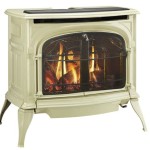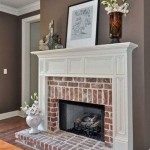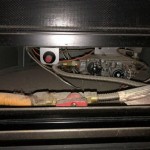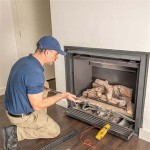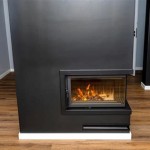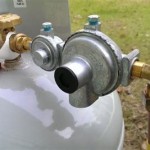Rock Over Tile Fireplace: A Comprehensive Guide
The aesthetic appeal of a fireplace is a significant factor in interior design. Combining the rugged texture of rock with the sleek finish of tile creates a visually striking and versatile focal point in a home. A “rock over tile” fireplace design involves applying natural or manufactured stone over an existing tiled fireplace surround. This technique offers a cost-effective and relatively straightforward method for updating the look of a fireplace without a complete reconstruction.
This article aims to provide a comprehensive understanding of the rock over tile fireplace design, covering considerations for material selection, installation procedures, and factors influencing the overall success of the project. This information is intended to guide homeowners and contractors through the process, enabling them to achieve a professional and aesthetically pleasing result.
Understanding the Existing Fireplace Structure
Before embarking on a rock over tile fireplace project, a thorough assessment of the existing fireplace structure is crucial. The structural integrity of the existing tile surround must be verified. Any loose, cracked, or damaged tiles must be repaired or replaced before adhering the rock facing. The substrate behind the tile, which could be brick, concrete board, or even drywall, must also be sound. Insufficient substrate integrity can lead to failure of the newly applied rock facing.
Examining the firebox opening and the distance between the existing tile surround and the firebox is vital for safety regulations. Adding rock facing can reduce this distance, potentially compromising the fireplace's safe operation. Local building codes dictate minimum clearances to combustible materials, and these codes must be strictly adhered to. If the addition of rock decreases this clearance, a non-combustible material, such as a steel heat shield, may be required between the rock facing and any potentially flammable components.
Finally, considering the existing mantel and hearth is essential. The added thickness of the rock facing can alter the relationship between the mantel and the surround. A decision must be made whether to adjust the mantel's height or depth to maintain visual balance. The hearth's dimensions may also influence the overall aesthetic of the finished fireplace, and modifications to the hearth may be needed to complement the new rock facing.
Selecting Appropriate Materials
The selection of both the rock facing and the adhesive is paramount to the success of a rock over tile fireplace project. Natural stone options include river rock, flagstone, and ledgestone. Manufactured stone veneer offers a lighter weight alternative to natural stone and comes in a wide array of colors, textures, and styles. The choice of material depends on the desired aesthetic, the structural capacity of the existing fireplace, and the budget.
Weight is a significant consideration, especially when applying rock over tile. Natural stone can be quite heavy, potentially exceeding the load-bearing capacity of the existing structure. Manufactured stone veneer is significantly lighter, reducing the risk of structural compromise. It is also uniform in size and shape, simplifying the installation process.
The adhesive used to attach the rock to the tile is equally critical. A high-quality thin-set mortar specifically designed for adhering stone or tile to existing surfaces is recommended. The selected mortar must be compatible with both the rock facing material and the existing tile. Some mortars are specifically formulated for non-porous surfaces like tile, while others are best suited for natural stone. Following the manufacturer's instructions for mixing and application is vital for achieving a strong and durable bond.
Installation Techniques and Best Practices
Proper installation is crucial for achieving a professional-looking and safe rock over tile fireplace. Before applying the rock, the existing tile surface must be thoroughly cleaned to remove any dirt, grease, or loose debris. A bonding agent, such as an acrylic latex additive mixed with the thin-set mortar, can improve adhesion, particularly on smooth or non-porous tile surfaces. This bonding agent creates a mechanical bond between the existing tile and the newly applied rock.
When setting the rock, it is important to ensure proper coverage of the thin-set mortar on the back of each stone. The mortar should be applied evenly, avoiding voids that can weaken the adhesion. The stones should be pressed firmly into place, ensuring good contact with the existing tile surface. Spacing between the stones can be adjusted according to the desired aesthetic, but consistent spacing is generally preferred for a more uniform look. Leveling and plumbness should be checked frequently during the installation process to ensure a visually appealing and structurally sound result.
After the mortar has cured, grouting the spaces between the stones provides a finished look and helps prevent moisture from penetrating behind the rock facing. The grout color can be selected to complement the stone, either blending in for a seamless appearance or providing contrast for a more dramatic effect. Excess grout should be removed promptly, and the surface of the rock should be cleaned to reveal its natural texture. A sealant can be applied to the grout to protect it from staining and moisture damage, prolonging the life of the fireplace surround.
Adhering to these considerations and best practices will help ensure the longevity, aesthetics, and safety of a rock over tile fireplace. Careful planning, appropriate material selection, and meticulous installation are the keys to a successful project.

The Tile Design By Kirsty 9 12 16 Stone Fireplace Remodel

Natural Stacked Stone Veneer Fireplace Ideas

Thin Stone Veneers Make A Fireplace Update Easy

11 Stone Veneer Fireplace Surround Design Trends Where To Buy

How To Tile A Fireplace Even If It S Brick The Handyman Daughter

12 Stacked Stone Fireplace Ideas For Optimal Coziness

Grey Rock Fireplace Tile Yahoo Search Results Cast Stone Design Stacked Fireplaces

How To Tile A Fireplace Even If It S Brick The Handyman Daughter

Thin Stone Veneers Make A Fireplace Update Easy

See How I Made Over An Ugly Clunky Stone Veneer Fireplace With Paint
Related Posts


